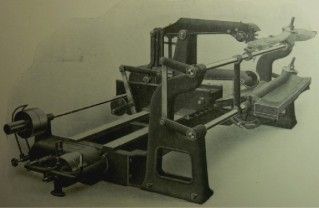Announcement
Collapse
No announcement yet.
Helice Normale
Collapse
X
-
Prop Duplicator
Figure from Whyrill Park's treatise on airscrew design, ~ 1920. The model prop is seen in the upper right corner. The blank to be carved is below, right.
Wadkins & Co., Leicester duplicator for prop manufacture. At some point when demand increased, companies went from hand made to duplicator machines like these.
Was the duplicator invented in the UK or France?
Any idea how accurate the duplicator machines were, and the approximate date these were invented and introduced into the prop fabrication industry?

Comment
-
Hi,
During WW1, at least 3 "duplicators" have been made in Europe : Savoïa (Italian), Selmersheim (France) and Chauvière (France). I have seen pictures of the first two which confirm their existence in 1918 and 1917 respectively, the one I saw of the Chauvière was not dated. It seems they were not used for time saving, but because of a lack of sufficiently skilled workers. The Selmersheim machine seems the most efficient, because it worked the length way and carved 2 props at the same time (but was not fully automatic). I have published a picture there: http://ratier.org/archives/fichelices/Rati34_Selm.pdf
I think this thread is now too far from its beginning. Perhaps it would be possible to move the last posts toward "Design" section ? (easier to ask than to do ... isn't it Dave?).
isn't it Dave?).
Regards,
PM
Comment
-
Helice Normale: back to 1910
Is it known when Chauviere and Ratmanoff began using mechanical duplicators, and what were the tolerances for the machined props compared with completely hand-worked?
Also, Chauviere apparently set up a research lab to define best wood properties about 1911. Are there existing records from that laboratory work?
It seems apparent that Eiffel and Drzeweicki (the engineer whose patents formed the basis for Ratmanoff's airscrew intellectual property) were not only acquainted, but shared laboratory space.
Thanks, all.
-pete
Comment
Comment